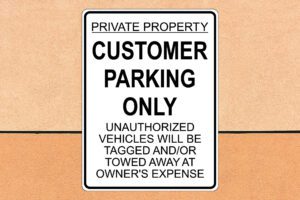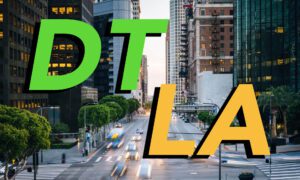
What Does Off-Street Parking Mean for Drivers?

Table of Contents
Searching for “what does off street parking mean”? It’s parking spaces that aren’t on public streets, such as lots and garages. This article breaks down off-street parking, uncovering the types you’ll encounter and the perks they offer. Dive in to understand the essentials of what does off street parking mean without the complexity.
Key Takeaways
- Off-street parking, including lots and garages, is designed to efficiently accommodate a higher number of vehicles separate from the public road system, with various types owned or operated by both public and private entities.
- Benefits of off-street parking encompass enhanced security through surveillance and controlled access, greater convenience with more space availability, especially in high-demand areas, and diverse long-term parking solutions with flexible permits and pricing.
- Off-street parking influences urban planning by reducing congestion in dense areas and can encourage the use of alternative transportation through strategic facility placement and policy incentives.
Off-Street Parking: A Simple Definition
Off-street parking refers to parking that is not on public roads but within designated areas such as parking lots and garages. These parking spaces are meticulously arranged to optimize space and facilitate the efficient parking and retrieval of vehicles.
The presence of a variety of off-street parking facilities, including parking lots, parking garage, and automated parking systems, highlights its adaptability.
The Essence of Off-Street Parking
Unlike on-street parking that weaves into the street layouts and traffic flow, off-street parking facilities are separate entities, designed to accommodate a higher vehicle capacity. These facilities range from parking lots to garages that operate independently from the public street system.
Privately owned off-street parking facilities, built to house more vehicles than usually found on public roads, meet the growing need for parking, particularly in crowded zones.
Types of Off-Street Parking Facilities
Off-street parking is available in many types to suit diverse parking requirements. Be it surface parking lots, multi-level garages, or underground structures, all aim to optimize space and efficiency. Public entities, such as municipalities, and private entities, like shopping centers, airports, or office buildings, may own or operate these facilities. Ownership and operation can vary between different types of organizations..
In dense urban areas, multi level parking garages, including underground parking, are utilized to maximize space by accommodating vehicles below ground level.
Access and Control Regulations
Off-street parking facilities typically employ controlled access points, including entrance and exit gates or automated barriers, in order to regulate access. Gated parking systems, such as ticketing systems, may also be utilized for this purpose. Compared to the more regulated on-street parking, off-street parking presents drivers with fewer rules, providing an added layer of convenience.
Moreover, accessible parking spaces in off-street parking areas adhere to the Americans with Disabilities Act (ADA) guidelines, further enhancing the inclusivity of these facilities.
The Benefits of Choosing Off-Street Parking

Off-street parking offers a myriad of benefits over its on-street counterpart. From increased parking capacity to enhanced security features and long-term parking solutions, off-street parking is a clear winner in the parking game.
The following sections will elaborate on these benefits in detail.
Security and Safety Features
One of the standout advantages of off-street parking is the enhanced security it offers. Off-street parking facilities provide:
- Security personnel
- Surveillance cameras to monitor the area
- Deterrence of unauthorized access
- Enhanced vehicle security
- Controlled access points, such as gates or ticketing systems, to add an extra layer of security against theft and vandalism.
Improved lighting in these facilities also ensures better visibility and safety, serving as a crime deterrent.
Convenience and Space Availability

Off-street parking excels in providing convenience to drivers. Its larger capacity, compared to on-street parking, gives drivers more choices, increasing chances of finding a spot.
This abundance of available parking spaces, including street parking spaces, is particularly beneficial in high-demand locations, where off-street parking can accommodate more vehicles during peak hours or events.
Long-Term Parking Solutions
Off-street parking services long-term parking requirements by offering various permit options and flexible pricing schemes. From standard daytime permits to evening permits and residential permits, off-street parking facilities offer a myriad of options for users.
The flexibility of off-street parking, accommodating a full spectrum of parking durations from short to long-term, underscores its suitability for diverse user needs.
Understanding the Cost Implications of Off-Street Parking

Off-street parking costs can vary widely, with options for hourly, daily, or monthly rates. Depending on the location and type of facility, costs can range from $10 to $60. Monthly off-street parking passes may cost from $35 in neighborhood commuter lots to $200 for downtown residential permits.
In most urban contexts, off-street parking is generally more affordable and less subject to rate fluctuations than on-street parking.
Parking Fees and Payment Options
Off-street parking provides a range of payment methods in line with different user preferences, making it a convenient paid parking system. Some of the payment methods available include:
- Ticket-based systems
- Pay stations
- Parking meters
- Digital payments
- Mobile apps
Mobile apps have also emerged as a convenient payment solution, offering users discounted rates for reservations made through the app.
Comparing On-Street and Off-Street Parking Costs
Comparing costs between on-street and off-street parking reveals differences in pricing structures. While on-street parking operates with metered time limits, off-street parking charges a flat fee with options for hourly, daily, or monthly rates.
This difference in pricing structures can often make off-street parking a more economical choice for long-term parking needs.
How Off-Street Parking Impacts Urban Planning and Traffic Flow

Off-street parking’s impact goes beyond just being a parking solution. It has a significant role in urban planning and traffic flow, affecting sustainability, housing, and equity.
The following sections explore how off-street parking can help reduce congestion in high-density areas and encourage the use of alternative transportation.
Reducing Congestion in High-Density Areas
Off-street parking can significantly reduce congestion in high-density areas by removing parked vehicles from the street, optimizing space usage, and improving traffic flow. Automated parking garages, which use robotic systems to park cars, maximize the number of vehicles that can be accommodated in a given space.
Studies have shown that redistributing on-street parking into other uses has resulted in a significant reduction in travel time and traffic delays.
Encouraging Use of Alternative Transportation
Effective off-street parking management and urban planning can encourage the use of alternative transportation options. Park-and-ride facilities, for instance, are strategically located near transit hubs, combining the use of personal vehicles for the initial travel with the use of public transportation for the subsequent journey.
Policies to reduce parking minimums can also serve as an incentive for individuals to switch to more sustainable modes of transportation, such as public transit, cycling, or walking.
Finding the Right Off-Street Parking Spot
The search for the perfect off-street parking spot is not solely about availability; it also involves considering factors like:
- proximity to your destination
- parking fees
- security measures
- operational hours
For instance, parking in a well-lit and visible area close to surveillance cameras or security outposts can minimize the risk of theft or vandalism, and may even be appreciated by traffic police for promoting safety.
Utilizing Technology to Locate Parking

With the advent of the digital era, technology is transforming our approach to locating parking. Real-time information provided by parking apps offers several benefits:
- Locating off-street parking quickly
- Allowing for immediate navigation to the selected parking space
- Enhancing transparency by clearly displaying parking lot rates and policies, enabling drivers to make informed decisions.
Considerations for Special Needs and Accessibility
Inclusivity is integral to off-street parking design. Facilities integrate features like wide spaces and accessibility provisions to cater to individuals with disabilities.
Accessible parking spaces in off-street parking areas should be located as close as possible to facility entrances, making them convenient for users with special needs.
Summary
In conclusion, off-street parking offers a comprehensive solution to the challenges of parking, providing convenience, security, and cost-effectiveness. By effectively managing off-street parking, cities can enhance livability, reduce congestion, and promote sustainable transportation options.
Frequently Asked Questions
What is off-street parking?
Off-street parking refers to designated parking areas separate from public roads, such as parking lots and garages, providing organized spaces for vehicles. It offers a convenient and organized solution for parking vehicles away from public roads.
What are the benefits of off-street parking?
Off-street parking provides increased security, convenience, and long-term parking solutions for vehicle owners. These benefits make it a highly desirable option for parking.
How do I pay for off-street parking?
You can pay for off-street parking through ticket-based systems, pay stations, or digital payments. Consider the method that is most convenient for you.
How does off-street parking impact urban planning?
Off-street parking has a significant impact on urban planning by influencing sustainability, housing, and equity.
How can I find the right off-street parking spot?
To find the right off-street parking spot, consider factors like proximity, fees, security, and accessibility, and use parking apps to locate and reserve spots. This can help streamline the process and secure a convenient parking space.
More from the Blog







How to easily find Overnight Parking?



Tips for Securing Apartment Parking in Downtown LA






